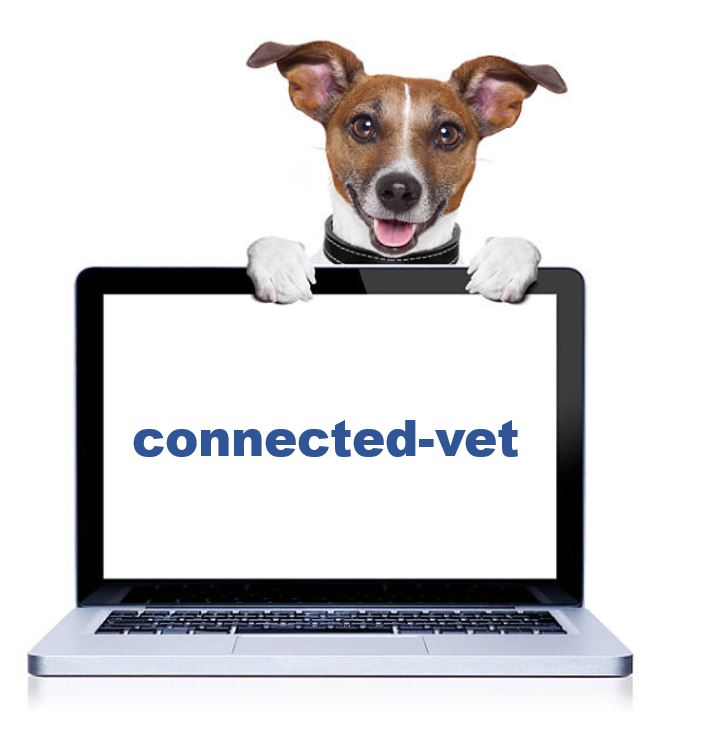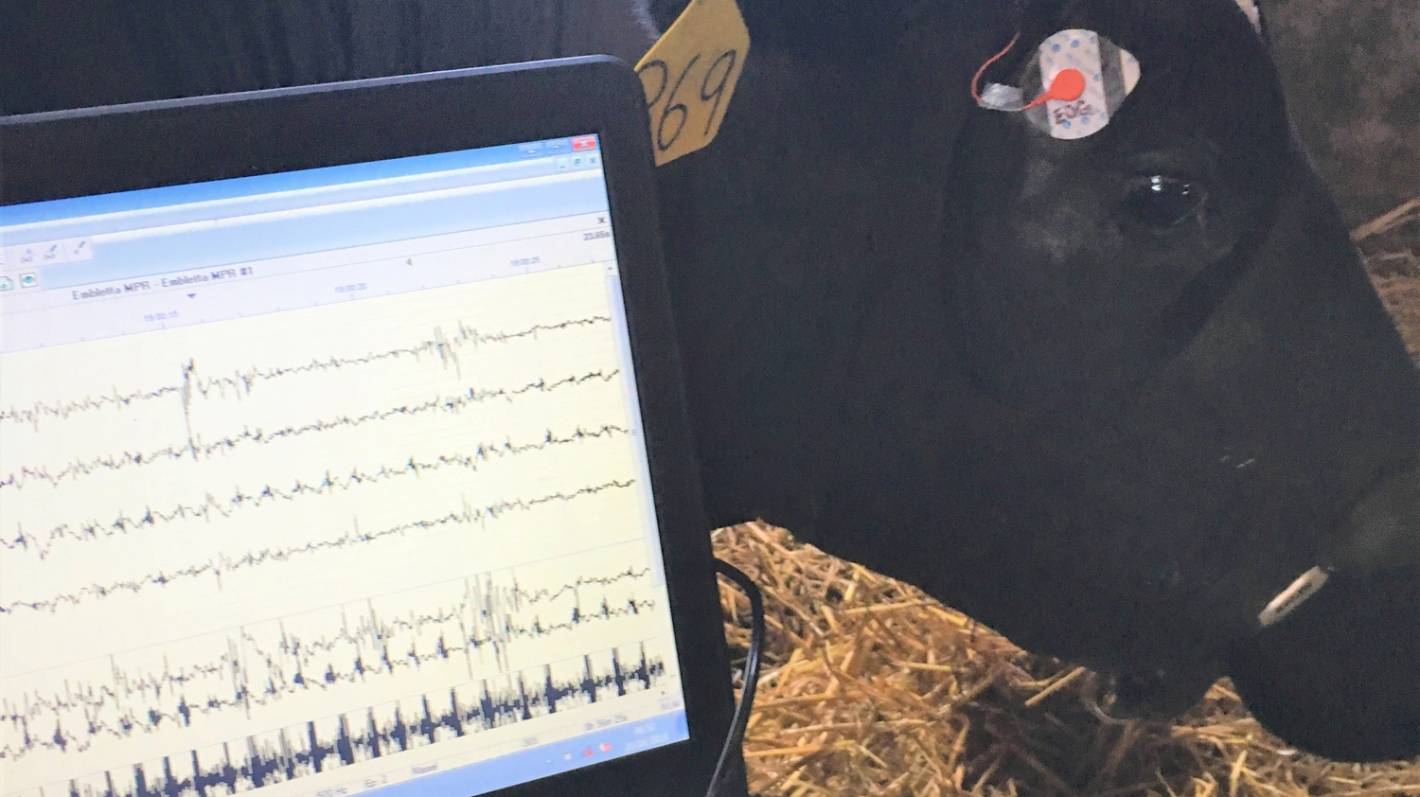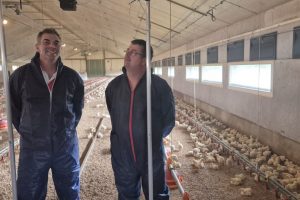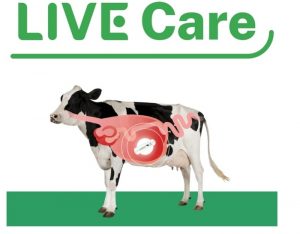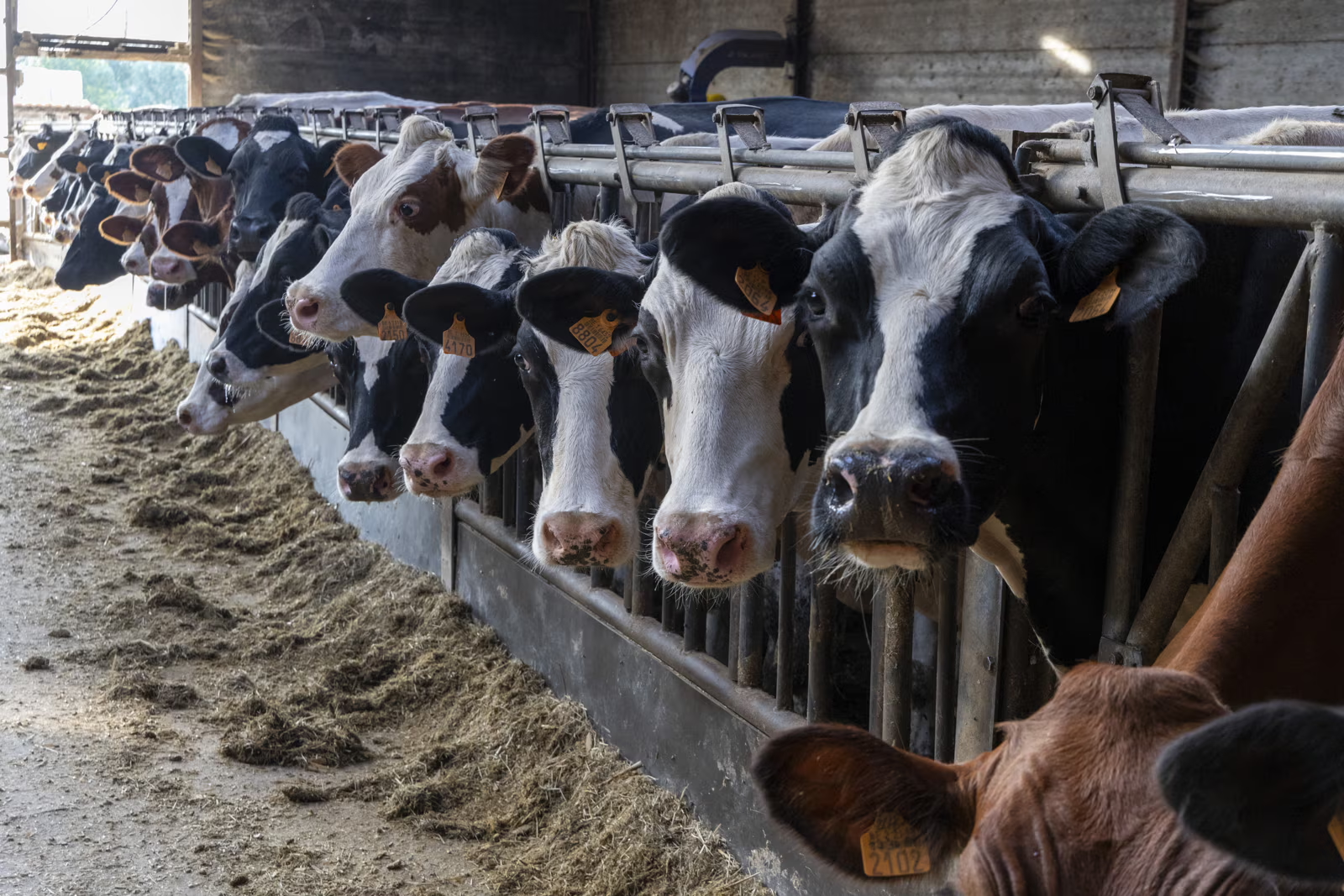Little is known about the sleep needs of cows, beyond it playing an essential physiological function, but scientists at AgResearch are trying to find out more through the use of artificial intelligence.
Because it’s difficult and impractical to gather this data on farms, the researchers wanted to see if data from a less invasive method could provide data on the different sleep stages of cows.
Researchers are using sensor devices placed on cows to take measurements during sleep, including neck muscle activity and heart rates to compare them with what is considered the gold standard for this type of research. They tested two machine learning models to predict sleep stages from muscle activity in different environments.
AgResearch animal behaviour and welfare science team leader Cheryl O’Connor said the data from a sample of six cows in both housed and pasture systems had machine learning applied to it.
The models then made predictions about what the muscle and heart rate data means for the cows at different sleep stages, as a kind of proxy for large-scale field trials.
“The result was that machine learning models were able to accurately predict sleep stages from the measures that were taken, and the accuracy was in a similar range to that for human computer models.”
Now that the method appeared to be a valid way of measuring and predicting the sleep stages of cows at a small scale, the researchers wanted to apply it to a much larger number of animals to validate the use of these methods.
“We think the insights we can get from this could potentially tell us more about overall animal welfare,” O’Connor said.
Animal welfare research was moving more towards trying to understand how the animal is interpreting its environment and life. Because sleep was an important measure for all animals, including humans, the researchers hoped to find out things like how uncomfortable surfaces or short sleeps affected them.
Just like humans, our dairy cows need their sleep; but AgResearch scientists have had to get innovative with new technologies to better understand the quality of shuteye the animals are getting.
« We know they don’t like lying down on wet muddy surfaces but they will lie down on them even when it is horrible for short periods. So there is obviously a driver for that. Is it fatigue? Is it they just give up, or is to sleep?”
It wasn’t widely known that cows did need to lie down in order to sleep, O’Connor said.
The research was done in collaboration with Scotland’s Rural College in Edinburgh with joint PhD student Laura Hunter.
One of the things that had previously been assumed was that if a cow was lying with eyes closed and a relaxed neck, it was sleeping. Hunter’s research showed that it wasn’t necessarily true.
The research would be built upon and shared with farmers and industry to help improve animal welfare on farms, she said.
Research saw it as one way of assessing cow’s welfare, which was important to farmers and to respond to the growing expectations of global dairy consumers.
Lire la suite: www.stuff.co.nz
